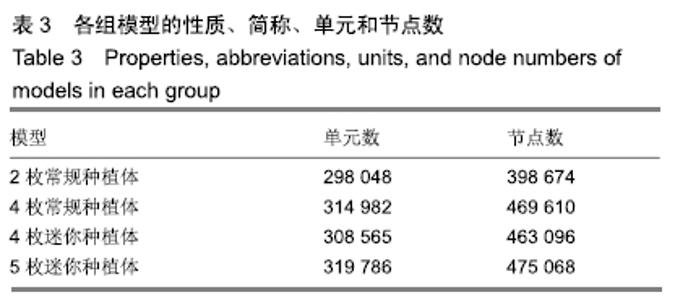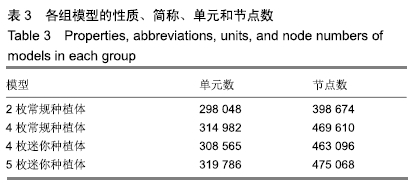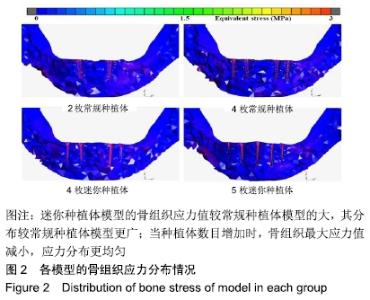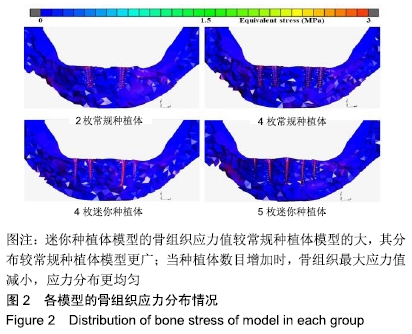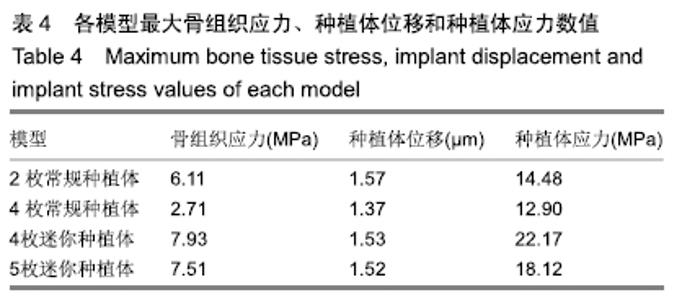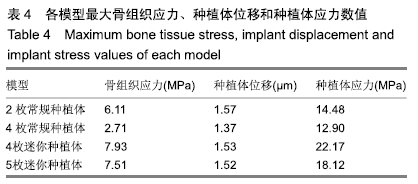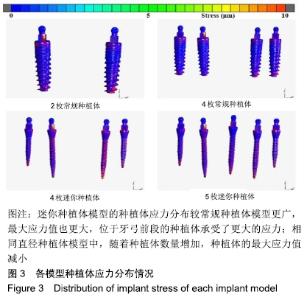[1] 齐小秋.第三次全国口腔健康流行病学调查报告[M].北京:人民卫生出版社,2008:21-22.
[2] 刘国存.老年人全口义齿再修复疑难病例的临床研究[J].口腔医学研究,2017,33(9):1004-1006.
[3] HASAN I, BOURAUEL C, MUNDT T, et al.Biomechanics and load resistance of small-diameter and mini dental implants: a review of literature.Biomed Tech (Berl). 2014;59(1):1-5.
[4] ENKLING N, SAFTIG M, WORNI A, et al.Chewing efficiency, bite force and oral health-related quality of life with narrow diameter implants - a prospective clinical study: results after one year.Clin Oral Implants Res.2017;28(4):476-482.
[5] SOLBERG K, HEINEMANN F, PELLIKAAN P, et al.Finite element analysis of different loading conditions for implant-supported overdentures supported by conventional or mini implants.Comput Methods Biomech Biomed Engin. 2017; 20(7):770-782.
[6] 陈俊良,何芸,黄跃.种植体联合牙半切剩余牙体共同支持下颌磨牙的三维有限元分析[J].中国组织工程研究,2016,20(34): 5027-5032.
[7] MARCIÁN P, BORÁK L, VALÁŠEK J, et al.Finite element analysis of dental implant loading on atrophic and non-atrophic cancellous and cortical mandibular bone-a feasibility study.J Biomech.2014;47(16):3830-3836.
[8] CHUN HJ, PARK DN, HAN CH, et al.Stress distributions in maxillary bone surrounding overdenture implants with different overdenture attachments.J Oral Rehabil.2005;32(3): 193-205.
[9] 陈俊良,刘旭琳,张潇月,等.短种植体修复牙槽骨严重吸收的下颌第二磨牙的三维有限元分析[J].口腔医学研究,2019,35(3): 246-250.
[10] SOĞANCI G, YAZICIOĞLU H.Evaluation of Stress Distribution of Mini Dental Implant-Supported Overdentures in Complete Cleft Palate Models: A Three-Dimensional Finite Element Analysis Study.Cleft Palate Craniofac J.2016;53(1):73-83.
[11] SCHWINDLING FS, SCHWINDLING FP. Mini dental implants retaining mandibular overdentures: A dental practice-based retrospective analysis. J Prosthodont Res.2016;60(3):193-198.
[12] BIDRA AS, ALMAS K.Mini implants for definitive prosthodontic treatment: a systematic review.J Prosthet Dent. 2013;109(3):156-164.
[13] DE SOUZA RF, RIBEIRO AB, DELLA VECCHIA MP, et al.Mini vs. Standard Implants for Mandibular Overdentures: A Randomized Trial.J Dent Res.2015;94(10):1376-1384.
[14] 葛奕辰,蒋少康,李轻如,等.All-on-4在不同骨质条件下应力分布的三维有限元分析 [J].口腔医学研究,2016,32(12):1252-1256.
[15] FATALLA AA, SONG K, DU T, et al. A three-dimensional finite element analysis for overdenture attachments supported by teeth and/or mini dental implants.J Prosthodont. 2012;21(8): 604-613.
[16] CHANG SH, HUANG SR, HUANG SF, et al.Mechanical response comparison in an implant overdenture retained by ball attachments on conventional regular and mini dental implants: a finite element analysis.Comput Methods Biomech Biomed Engin.2016;19:911-921.
[17] CARVALHO NA, DE ALMEIDA EO, ROCHA EP, et al.Short Implant to Support Maxillary Restorations:Bone Stress Analysis Using Regular and Switching Platform.J Craniofac Surg.2012;23(6):678-681
[18] JOHN J, RANGARAJAN V, SAVADI RC, et al.A finite element analysis of stress distribution in the bone, around the implant supporting a mandibular overdenture with ball/o ring and magnetic attachment.J Indian Prosthodont Soc. 2012;12(1): 37-44.
|
